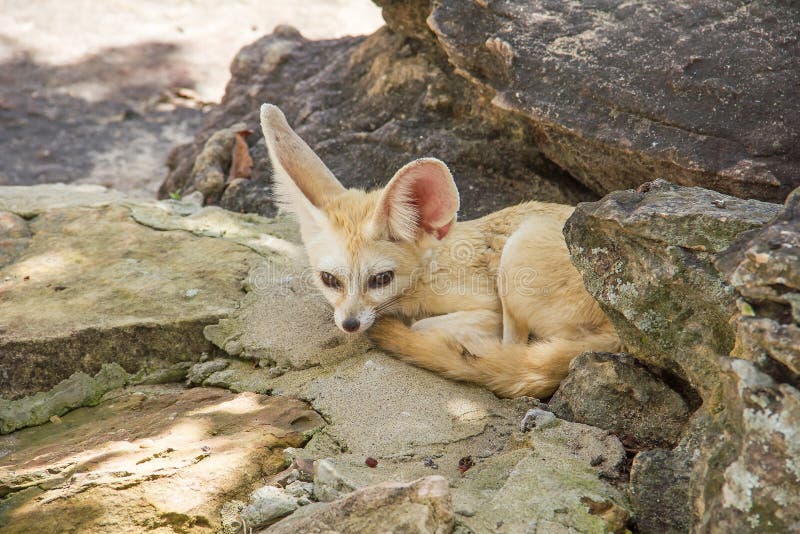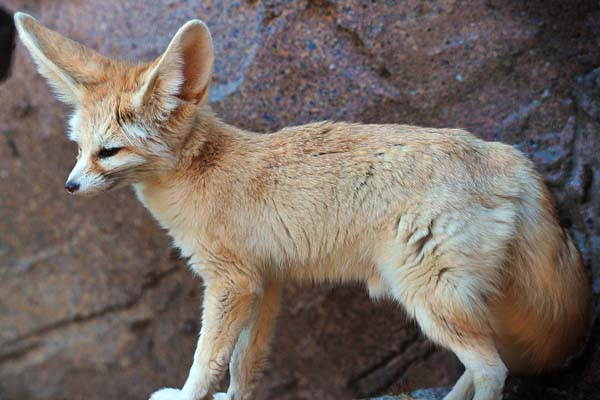
But according to nomads, the fennec fox is fast and changes directions so that even their Salukis are hardly able to capture it. Anecdotal reports exist about caracals, jackals, striped hyenas also preying on the fennec fox. PredatorsĪfrican horned owl species likely prey on fennec fox pups. The oldest captive male fennec fox was 14 years old, and the oldest female 13 years. The pups are weaned at the age of 61 to 70 days. Pups remain in the family even after a new litter is born. They communicate by barking, purring, yapping and sqeaking. Females give birth between March and June to a litter of one to four pups that open their eyes after 8 to 11 days. After mating, the male becomes very aggressive and protects the female, provides her with food during pregnancy and lactation. Gestation lasts between 50 and 52 days, sometimes also up to 63 days.

The copulation tie lasts up to two hours and 45 minutes. ReproductionĬaptive fennec foxes reach sexual maturity at around nine months and mate between January and April. In the Algerian Sahara, 114 scat samples were collected that contained more than 400 insects, plant fragments and date palm Phoenix dactylifera fruits, remains of birds, mammals, squamata and insects. Some individuals were observed to bury prey for later consumption and searching for food in the vicinity of human settlements. It hunts alone and digs in the sand for small vertebrates and insects. It relies on the moisture content of prey, but drinks water when available. The fennec fox is an omnivore, feeding on small rodents, lizards, geckos, skinks, small birds and their eggs, fruits and also some tubers. In soft, looser sand, dens tend to be simpler with only one entrance leading to a single chamber. In some cases, different families interconnect their dens, or locate them close together. In compacted soils, dens are up to 120 m 2 (1,300 sq ft) large, with up to 15 different entrances.

Photo: Klaus Rassinger und Gerhard Cammerer, Museum Wiesb / CC BY-SA 3.0 / en.Ī fennec fox digs its den in sand, either in open areas or places sheltered by plants with stable sand dunes. Males are slightly larger, ranging in head-to-body size from 39 to 39.5 cm (15.4 to 15.6 in) with a 23–25 cm (9.1–9.8 in) long tail and 10 cm (3.9 in) long ears, weighing at least 1.3 kg (2.9 lb). The pads of its paws are covered with dense fur, which facilitates walking on hot, sandy soil. The dental formula is 3.1.4.2 3.1.4.3 × 2 = 42 with small and narrow canines. It has dark streaks running from the inner eye to either side of the slender muzzle. The ear to body ratio is greatest in the canid family and likely help in dissipating heat and locating vertebrates. The edges of the ears are whitish, but darker on the back. Its long ears have longitudinal reddish stripes on the back and are so densely haired inside that the external auditory meatus is not visible. The fur of the fennec fox is straw-coloured. Its name comes from this species' name in Arabic: fanak ( فَنَك). The fennec's fur is prized by indigenous peoples of North Africa, and in some parts of the world, it is considered an exotic pet. The fennec is usually assigned to the genus Vulpes however, this is debated due to differences between the fennec and other fox species. Knowledge of social interactions is limited to information gathered from captive animals. Precise population figures are not known but are estimated from the frequency of sightings these indicate that the fennec is currently not threatened by extinction. Fennec families dig out burrows in the sand for habitation and protection, which can be as large as 120 m 2 and adjoin the burrows of other families. Its main predators are the Verreaux's eagle-owl, jackals, and other large mammals. The fennec has a life span of up to 14 years in captivity and about 10 years in the wild. It mainly eats insects, small mammals, and birds. Also, its hearing is sensitive to hear prey moving underground. Its coat, ears, and kidney functions have adapted to the desert environment with high temperatures and little water.

The fennec is the smallest canid species.

Its most distinctive feature is its unusually large ears, which serve to dissipate heat. The fennec fox is a small crepuscular fox native to the Sahara Desert and the Sinai Peninsula.


 0 kommentar(er)
0 kommentar(er)
